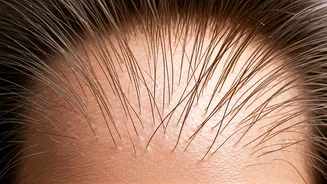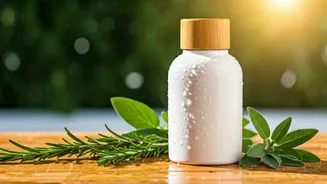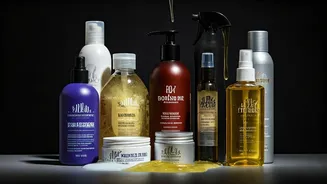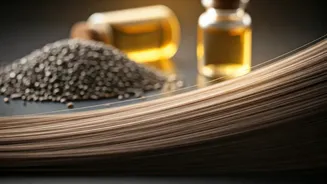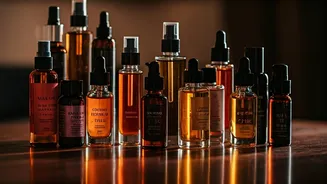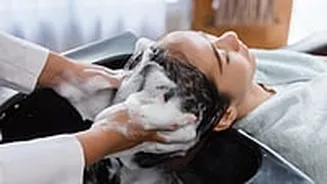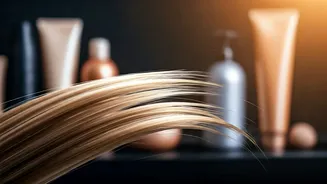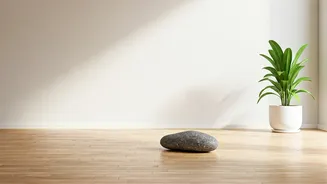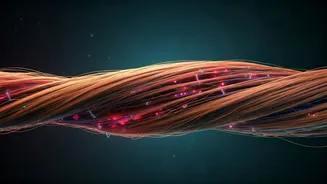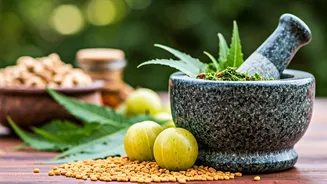Too Much Pressure
One of the most frequent errors in scalp massage is applying excessive pressure. Although it may seem intuitive that greater force leads to better results,
this isn't necessarily true. Overdoing it can irritate the scalp, potentially damaging hair follicles. Think of it like a delicate plant – too much pressure can uproot it. A gentle touch, using fingertips to make circular motions, is generally more effective. This allows for better circulation without causing inflammation. Moreover, excessive pressure can cause discomfort, making the experience unpleasant. A light, consistent massage is key to improving blood flow and stimulating hair growth. It's about finding the balance between stimulation and relaxation, ensuring that the massage is both soothing and beneficial.
Dirty Fingers Massaging
Massaging your scalp with unwashed hands is another mistake that can affect hair health. Hands come into contact with various surfaces throughout the day, accumulating dirt, oil, and bacteria. Transferring these elements to your scalp can clog pores, leading to inflammation and potentially hindering hair growth. Think of your scalp as a garden. You wouldn't want to plant seeds in contaminated soil, would you? Clean hands ensure that the scalp remains clean, promoting healthy hair growth. Before commencing a scalp massage, washing your hands thoroughly with soap and water is crucial. This helps to prevent the spread of bacteria and maintain scalp hygiene. By taking this simple step, you're creating a clean environment that supports healthy hair growth.
Massage Too Frequently
Performing scalp massages too often can be counterproductive, leading to increased hair fall. While scalp massages are beneficial, overdoing them can stress the hair follicles, potentially weakening them. Think of it as exercising a muscle: overtraining can lead to soreness and injury. The recommended frequency of scalp massages varies based on individual hair and scalp health, but daily massages are generally unnecessary and may be too frequent for many people. It's important to find a balance that suits your needs, ensuring the scalp receives stimulation without being overstimulated. Listen to your hair; if you notice increased shedding or sensitivity, it might be time to reduce the frequency. Aim for a moderate approach, such as a few times per week, to get the best results.
Using Cold Oil
Using cold oil straight from the bottle is another mistake that may lessen the advantages of a scalp massage. Cold oil may not penetrate the scalp effectively, making it difficult to improve blood circulation. Think of it like warming up before exercise; warming the oil first aids its effectiveness. Heating the oil slightly before the massage can improve its absorption and efficacy. Warm oil spreads easier, promotes relaxation, and improves blood flow to the scalp. Warm the oil gently – avoiding overheating it. Apply it to the scalp and then perform the massage. The warmth opens up pores, allowing the oil to penetrate the scalp and nourish the hair follicles. The massage will be more comfortable and efficient if the oil is warm, maximizing the benefits.
Ignoring Scalp Ends
Another mistake is neglecting the ends of your scalp during the massage. The entire scalp needs attention, and focusing only on certain areas means you are missing significant portions. Many people primarily focus on the top of their heads. However, the sides and back are equally important as they often experience similar issues like dryness or product buildup. A complete scalp massage involves circular motions across the entire scalp, not just selected spots. This ensures equal distribution of the benefits. When massaging, dedicate adequate time to the entire scalp. Ensure you cover all parts evenly. This comprehensive approach promotes uniform blood circulation and encourages the overall health of the scalp.
Not Rinsing Properly
Proper rinsing after a scalp massage is vital, and not doing it can cause problems. After the massage, the scalp may have oil and impurities, which must be thoroughly removed. Failure to rinse correctly can leave residue and clog pores, resulting in irritation and hair issues. Think of it like washing your face: if you don’t rinse properly, the cleanser remains, causing problems. After massaging, use lukewarm water to rinse. Make sure that all the oil and massage products are washed out, without residue. A thorough rinse helps to keep the scalp clean and the hair healthy. It also maintains a clean environment for hair growth and promotes overall scalp health. This ensures the scalp remains clean and supports healthy hair.
Skipping Consistency
Consistency is key when it comes to scalp massages; this is the final mistake. Spotty massage routines won't yield optimal results. Regular and consistent massages are most effective for improving scalp health and promoting hair growth. Think of it as following a workout routine: sporadic sessions aren’t as beneficial as a regular schedule. For the best outcome, establish a regular scalp massage routine. Make it part of your self-care. Doing this a few times per week is an excellent starting point; it yields consistent benefits. Consistency helps improve blood flow and keeps the scalp healthy. It allows the benefits to accumulate over time. This approach optimizes the potential for improving hair health, and maximizing the effectiveness of the process.
